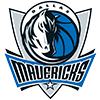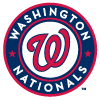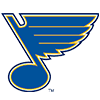This Week's Scouting Tip: Can a Pitcher Throw Too Many Strikes?
I heard a very interesting comment the other day referring to Phillies ace Cliff Lee. In essence, the comment suggested that Lee sometimes runs into trouble because he throws too many strikes. Is that possible? Every expert states when evaluating pitchers, that "he needs to throw more strikes" or "he is in the strike zone with almost every pitch." Isn't that the ideal? I mean, every time one of my guys walks a batter, he comes around to score, not to mention that nasty hit to my WHIP. So, I suppose it's easy to decide that you don't want your guy to throw pitches out of the zone. Still, if you really think about it, there have probably been many games where your pitcher got out of a sticky situation when a hitter swung at a pitch out of the zone. Maybe there is actually something to this "too many strikes" thing. Let's take a look ...
Exploring it further: There is a time, and a place, for throwing strikes ...
Count is perhaps the most critical factor in determining whether the next pitch should be a strike. For example, first pitch strikes typically result in better performances. I always watch for pitchers who consistently throw first pitch strikes. Getting ahead in the count is one of the most important aspects of the pitching art. When he is ahead in the count, even 0-1, the pitcher opens up
This Week's Scouting Tip: Can a Pitcher Throw Too Many Strikes?
I heard a very interesting comment the other day referring to Phillies ace Cliff Lee. In essence, the comment suggested that Lee sometimes runs into trouble because he throws too many strikes. Is that possible? Every expert states when evaluating pitchers, that "he needs to throw more strikes" or "he is in the strike zone with almost every pitch." Isn't that the ideal? I mean, every time one of my guys walks a batter, he comes around to score, not to mention that nasty hit to my WHIP. So, I suppose it's easy to decide that you don't want your guy to throw pitches out of the zone. Still, if you really think about it, there have probably been many games where your pitcher got out of a sticky situation when a hitter swung at a pitch out of the zone. Maybe there is actually something to this "too many strikes" thing. Let's take a look ...
Exploring it further: There is a time, and a place, for throwing strikes ...
Count is perhaps the most critical factor in determining whether the next pitch should be a strike. For example, first pitch strikes typically result in better performances. I always watch for pitchers who consistently throw first pitch strikes. Getting ahead in the count is one of the most important aspects of the pitching art. When he is ahead in the count, even 0-1, the pitcher opens up a much more varied menu for the hitter to choose from. What's next? A breaking ball down and away? A fastball in on the hands? An off-speed offering that will be difficult to time? It might be any of those, and that next pitch might not be what the pitcher has been relying on most of the game. The hitter is guessing.
When the hitter is guessing, it's automatically, advantage pitcher, and that's what being a successful pitcher is really all about. So, if a first pitch strike is that important, what impact does that have on subsequent pitches? Unless you are Manny Sanguillen or Vladimir Guerrero, pitches in the strike zone are much easier to hit. If you have to "expand the strike zone" to protect yourself because you are down in the count, you will find yourself swinging at pitches out of the zone. Ah ha! That's when throwing too many pitches in the strike zone could be a bad thing. If pitches out of the zone are harder to hit, and a pitcher can entice hitters to swing at those pitches, good things can happen.
Given that fact, we can add the ability to throw meaningful pitches outside the zone to the traits we want to see as we continue our quest to uncover the best pitchers for our fantasy team. Obviously Lee and his amazing control are still worth having on the staff, but throwing "purpose" pitches outside the zone can also be a positive. Look for guys that consistently get ahead in the count, and then deliver appealing pitches close to but outside the prime hitting zone. When behind in the count, being able to throw a quality strike is certainly the ideal, but 1-2 and 0-2, etc. are pitcher's counts and should belong to your pitcher. If he can take advantage of those scenarios, his ERA will drop, and his strikeout rate will likely go up. Nothing is more frustrating when watching a pitcher than having your guy toss an 0-2 pitch over the heart of the plate resulting in a key hit to extend an inning or score a critical run. Actually, a tendency to do that is often marked as a significant negative in the analysis of a pitcher, so the answer is yes, it is possible to throw too many strikes.
Here are things to watch for regarding the timing and placement of strikes:
- First things first. Getting ahead in the count is one of the most important things a pitcher can do to produce a chance to win. Always watch for pitchers who consistently throw quality strikes on the first pitch to a batter. Ball one on the first pitch quickly reduces the array of pitches a hitter feels compelled to consider for subsequent offerings. Fewer options equal a better chance to make contact.
- Make sure the pitcher always has a plan. When you hear about someone being a "pitcher" rather than a "thrower" it usually refers to the pitcher using every pitch to set up a future offering. A well-placed pitch up and in, usually not a strike, can often make the batter less capable of handling a pitch at the bottom of the strike zone on the outer edge of the plate. There was a reason for that ball.
- When ahead in the count, especially with two strikes, a pitcher will sometimes "waste a pitch" with something out of the zone. The best pitchers rarely actually "waste" a pitch. They are attempting to get the hitter to swing at a pitch that is close enough to look like a strike, but ends up outside the hitting zone. The key is whether or not the pitch was an "easy take." If the hitter could immediately recognize a ball, it was truly a wasted pitch, if not, the pitch served its purpose.
- Finally, most pitchers need to throw pitches outside the strike zone. The art of pitching is all about keeping the batter off balance, disrupting his timing, and creating an environment where he doesn't really know what to expect next. Most major league hitters can hit a fastball, no matter how fast, if they know it is coming and they are reasonably sure it will be in the strike zone. The guys we want are the pitchers who can mix things up, getting ahead in the count, and forcing the hitter to expand his strike zone while guessing what pitch is coming.
Now, let's check this week's Scouting Notebook ...
This continues our weekly feature scouting pitchers of interest. We won't normally cover the elite guys in this column; rather this forum is dedicated to finding pitchers who might help, and more importantly, might be obtainable (as well as pitchers to avoid). All right ... let's get started with this week's featured arms:
Jonathan Sanchez (SF)@ MIL - There are a handful of pitchers who could just as easily either toss a no-hitter or get blown out in the third inning of any start. Jonathon Sanchez appears right at the top of that list. In fact, he has done both. For fantasy owners, Sanchez is the epitome of frustration because it is almost impossible to predict whether he will be Dr. Jeckyl or Mr. Hyde before he steps on the mound that day. The opposition doesn't really matter - he can handle the best of them when he's locked in, and he can implode against the weakest lineup in the league when he's not.
Our target game against Milwaukee (a strong lineup in a hitter-friendly park) was close to a gem. Sanchez threw seven innings, allowing two runs on two hits with, here it comes, four walks, while striking out eight. He threw 104 pitches (65 for strikes) and left trailing 2-0. The Giants would later tie the score before losing 3-2. The concerns with Sanchez are blatantly apparent. The four walks are high, but by limiting the Brewers to two hits he provided a very useful WHIP for the game. While his apparently effortless delivery consistently disrupts the timing of hitters, he has to get ahead in the count.
Two components of his game pose the biggest challenge for Sanchez. He sometimes loses his release point, and he sometimes fails to stay on top of the ball. The improper release point results in pitches staying up in the zone, and when he is not on top of the ball at release, everything flattens out. He compensates by being too fine - when he's on he can completely trust his stuff - and he avoids the strike zone to limit the potential damage. His pitch count explodes, and while he may not give up many runs, he departs the game too early, and that potentially costs him wins. Still, he nearly always contributes plenty of strikeouts, and when he gets in a groove he can be dominating.
Many experts recommend staying away from Sanchez because he is too unpredictable and frustratingly inconsistent. I'll go against that grain, and at least partially endorse him for a spot on some fantasy rosters. Evaluate your staff before deciding if he should be your guy. If you have arms that are likely to provide a decent ERA and WHIP but few strikeouts, you can probably absorb his extra base runners and occasional blowup while benefiting from his outstanding strike out rate. He may never become a true command pitcher, but he is capable of carrying a fantasy staff for stretches when he's locked in.
Yunesky Maya (WAS)vs. SD - The Nationals are a team in transition as they use many of their veterans while the highly regarded farm system develops their future. However, Maya is more of a veteran than a kid - he is 29 years old and played several seasons in the top Cuban league before defecting. He made his MLB debut late last season and was frankly, not very good. Despite the disappointing numbers, there were some things to look forward to, and he may be about to get his chance to show the skills that made him a top pitcher in Cuba.
Maya is not a power pitcher by any definition. He throws a variety of pitches that rivals any professional in the game today. His fastball (not surprisingly he throws both a 2-seamer and a 4-seamer) falls into the 89-92 range, he throws a soft curve with a lot of two-plain break (74-77), a slurvy slider/curve with more downward action (79-82), and a conventional slider (82-85). Add in a straight change in the low 80s, a splitter, and the ability to throw many of his pitches from varying arm angles and you can see why hitters have to be on their toes with every pitch. With that repertoire, he just has to command the zone with at least a few of his offerings. Further, and perhaps as importantly, he really needs to learn to save some of the pitches in that trick bag for later in the game. In Cuba, he could throw it all from "play ball," here he will learn to hold something back.
In our game against San Diego, Maya cruised early with most Padres' hitters guessing on almost every pitch. Unfortunately, he had shown them pretty much everything he had by the 3rd inning. Additionally, by the 5th inning, he was beginning to show signs of fatigue as he lost his rhythm (he is a rhythm pitcher) and struggled with his command. Stamina should not be a concern, but in this game many of his pitches late in the outing were high stress situations, and that is typically more taxing. However, he was great pitch or two from a very solid performance, and that is encouraging.
Overall, there is no question that Maya can be an asset as he adapts to professional baseball in the United States. A major step will be accepting that he can use a portion of his arsenal early, but save a few of those specialty offerings for the third and fourth time through the batting order. He will learn to be more confident while relying as much on deception as pinpoint location. I would label him a quality work in progress.
Ryan Vogelsong (SF)vs. FLA - Last week, we took a look at Diamondbacks' right-hander Josh Collmenter with his unique over-the-top delivery. Vogelsong is similar in some ways to Collmenter. He was not considered a particularly high ceiling pick when he was drafted, he did little to distinguish himself in the minor leagues and even less when he originally pitched at the major league level. However, their paths split at this point. Vogelsong pitched in Japan during the 2006-2009 seasons where he learned a great deal about the art of pitching. When he returned to the United States in 2010, he was signed by the Angels, released, then signed by the Phillies, and again he was released. No kid, at age 33, it looked like it might be over. He took another shot this spring with the Giants, and was assigned to Triple-A as depth for an organization somewhat thin in starting pitching. But, when Barry Zito was injured, Vogelsong got the call - and the chance to show what he had learned in his overseas adventures.
In our game against the Marlins, Vogelsong took his first loss of the season despite pitching another gem. He featured a low-mid 90s fastball and a very crisp curve with plenty of down angle. He also has a slider that didn't show much tilt, and a change-up, although he rarely used either which suggests he may not be completely comfortable with those offerings right now. He pounded the strike zone down, virtually never throwing a pitch above the belt, and he was precise in moving his fastball in and out. In fact, his confidence in his command of the fastball and curve was very evident as he repeatedly pitched inside to left-handed batters - a dangerous place to live if you are even slightly off your mark. Late in the game, he did appear to tire a bit as he was up in the zone occasionally, and missed his spots more frequently, so he may also need more stamina.
In the years since his MLB debut, Vogelsong has become a pitcher. As a thrower with good, albeit not great, stuff he struggled just to stay at the top of rung of the sport. Command was generally an issue, but he has learned the art of throwing to spots rather than trying to throw a straight fastball past major league hitters. It appears he could remain effective, even after the league becomes more familiar. Expect a solid WHIP, a decent ERA, and an average to slightly above average strikeout rate that could rise if he mixes in more change-ups and sliders once he becomes more confident in them.
Some Short Takes:
Brian Matusz (BAL) - His long-awaited 2011 debut is now imminent. The Orioles have understandably been very cautious with his rehab from an intercostal strain, but all signs indicate that he is ready to contribute. He remains the top arm in the Baltimore arsenal and should be snatched up if he is available in your league for some reason.
Jorge De La Rosa (COL) - A torn UCL will send him under the knife for Tommy John surgery, ending his 2011 season and taking him out of the consideration set for at least the beginning of 2012. A major hit to the Rockies hopes, and his fantasy owners, he is probably not worth hanging onto, even in long-term keepers.
Jair Jurrjens (ATL) - I don't know about you, but JJ can pitch for my team (actually he does pitch for all of my teams). He is not going to be a huge strikeout guy, but he is the essence of pitching with a plan. His command is very good, and every pitch he throws comes complete with a purpose. That's very impressive for a pitcher his age.
Max Scherzer (DET) - I always prefer pitchers with repeatable deliveries and that has always made me leery of Scherzer. After a hot start, his mechanics have gotten out of synch which has resulted in lower velocity while leaving a lot of pitches up and out over the plate. He'll get back to normal, but this will likely be an ongoing annoyance.
Felipe Paulino (KC) - Recently acquired from the Rockies, he was outstanding in relief in his first outing for Kansas City and they now plan to try him as a starter. They need help until the kids are ready. He has electric stuff, but the plate tends to move around on him so he could be good or he could be bad - and he can be either on any given day.
Phil Humber (CWS) - He continues to defy the odds by posting good peripherals as a member of the White Sox' 6-man rotation. I am not convinced. In fact, that expanded rotation is not likely to last long, and he is the most likely to be the odd man out. List him as a sell high candidate if someone will offer value for his services. But, do it soon.
Homer Bailey (CIN) - More shoulder problems. He missed part of 2010 and started this season on the DL with shoulder woes so you have to be concerned. Until he shows he can both pitch well, and do it every five days, he will not be a great fantasy option.
Andy Oliver (DET) - The line was nothing eye-popping, unless you take the opposition into account, but there were some positives in his start against Boston. He could use more time in the minors to refine his secondary stuff, but there is some potential here.
Frank Francisco (TOR) - He has struggled leading to a "committee" of closers in Toronto. He remains the best option and will probably get the fulltime job in time. A sleeper could be Jason Frasor if he pitches well while the gig is open to the whole bullpen. He would actually be a better choice than either Jon Rauch or Octavio Dotel.
Joe Nathan (MIN) - He hasn't been the Joe Nathan of the past since returning to the majors following Tommy John surgery last year. Now he is back on the DL as the Twins play it cautiously. Matt Capps has been an adequate replacement, but the Twins bullpen overall is a disaster right now, and no lead is safe for their rotation starters.
Neftali Feliz (TEX) - The Rangers say they aren't concerned with his struggles since coming off the DL. I'm not convinced. His curveball command is nothing like it was last season. Add the fact that the Rangers are actively talking to teams about the availability of closers like Joel Hanrahan and Heath Bell. That suggests concern.
Kids Corner ...
Liam Hendriks (MIN) - Kyle Gibson gets most of the ink among Twins pitching prospects, but you can make a good case for Hendriks being in the same class. He is not a refined as Gibson, but he has a smooth, repeatable delivery and features a 90-93 mph fastball with sink, a sharp slider, a nice curve and a good change-up. Perhaps most importantly, he throws them all for strikes. Look for him possibly as early as 2012.
For some of the most in-depth coverage of all things pitching in fantasy baseball for 2011, visit www.bogfella.com and be sure to follow @RotoWire and @bogfella on Twitter.



























